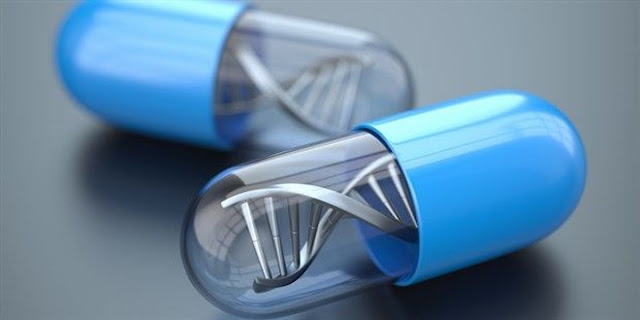 |
| Cell Therapy Manufacturing |
Cell Therapy Processing: Ensuring Quality and Safety Standards Are Met
Cell therapy manufacturing involves multiple complex processing steps to ensure
the safety and quality of the final cell therapy product. Strict quality
controls and testing are in place throughout the entire manufacturing process.
Cells must be expanded to reach the necessary dose and characterized to verify
their identity, viability, sterility and functionality. Processing steps such
as isolation, activation, transduction and formulation help prepare the cells
for patient administration. Comprehensive testing confirms the cells maintain
their desired phenotypic and functional characteristics and are free of
contamination. Advanced analytical techniques provide a thorough product
characterization profile. All factors related to the cell therapy facility,
equipment, personnel and process must adhere to current good manufacturing
practices (cGMP). Rigorous documentation captures every detail to support
regulatory compliance and process reproducibility.
Cell Source Selection and Procurement
The starting cell source is critically important to the consistency and
therapeutic potential of the final Cell
Therapy Manufacturing product.
Autologous cell sources derived from the patient themselves can avoid immune
rejection but require an individual manufacturing process for each patient
which adds complexity. Allogeneic cell sources from qualified healthy donor
cells allow for an "off-the-shelf" product that can be made available
for multiple patients. Careful donor screening and cell procurement procedures
ensure high quality starting material. Factors such as donor age, medical
history and cell viability are considered to maximize the cell attributes
needed for meaningful therapeutic benefit. Standardized collection, isolation,
cryopreservation and thawing methods deliver a well-characterized cell source
for subsequent manufacturing steps.
Cell Expansion and Activation Preparation for Administration
To reach the necessary clinical dose, harvested cells must typically undergo
expansion in bioreactors or cell culture systems. Advanced processes and
technologies now support the extensive proliferation needed. For some cell
therapy applications, activation or transduction steps may also be
incorporated. Activation can help enhance the cells' disease-modifying
capabilities while transduction introduces genetic modifications like suicide
genes that increase safety. Cells are expanded, activated and/or transduced
under carefully controlled and monitored conditions. Automated systems provide
a reproducible, contaminant-free environment with optimized culture parameters.
On-line monitoring, sampling and quality testing ensure critical process
parameters and cell attributes remain within predetermined specifications.
Formulation, Fill and Finish of Final Therapy Product
Following expansion and any activation/transduction steps, cells must be
prepared into their final therapy product formulation for administration to
patients. The final formulation aims to maintain optimal cell viability,
functionality and stability during shipping, handling and administration.
Various cleanroom production activities such as harvest, wash, formulation,
filling and labeling come together for the "fill and finish" stage of
manufacturing. Automated or semi-automated systems may be employed to
aseptically transfer, combine and dispense the prepared cells and other product
components into injection vials, bags or cartridges. Quality control testing
verifies the final product meets all release criteria for safety, identity,
purity, potency and sterility. Finished products are packaged and released for
distribution with full traceability to the starting raw materials and robust
stability data.
Facility and Equipment Qualification and Process Validation
State-of-the-art cell therapy manufacturing facilities and equipment require
significant resources to design and construct in a manner suitable for cGMP
production. Specialized cleanrooms, utilities and controlled environmental
systems ensure strict standards of sterility and process containment.
Production equipment such as bioreactors, cell processing, filling and
monitoring systems must also be thoroughly qualified. Qualification activities
confirm the design and engineering qualifications, installation qualifications,
operational qualifications and performance qualifications of all associated
manufacturing resources prior to process validation and routine production.
Comprehensive process validation then demonstrates the manufacturing process is
capable of consistently producing a product meeting predefined quality
standards. This "design space" determination supports process
scalability and process or facility changes over the product lifecycle.
In-Process Monitoring, Controls and Quality Review
Maintaining tight control over critical manufacturing parameters and product
quality attributes is essential throughout the entire cell therapy production
process. Robust in-process monitoring requires the use of online technologies,
sampled quality checks and environmental monitoring. Automated systems provide
real-time data capture on critical manufacturing parameters like temperature,
pressure and gas levels within equipment. Evaluating periodic culture,
in-process and environmental samples assesses cell viability, identity, purity,
potency and sterility. Deviations from predefined acceptance criteria are fully
investigated. Quality control review ensures each batch meets all release
specifications before final product disposition. Change control management
oversees any impact of process modifications to facilities, equipment, raw
materials or procedures. This multi-layered quality system assures a
consistent, safe and effective cell therapy is delivered for patient infusion.
Supply Chain Organization and Traceability Requirements
The specialized raw materials, components and services required to support cell
therapy manufacturing rely on an intricate supply chain network.
Transportation, storage, and inventory controls ensure a stable supply of
crucial inputs such as cell sources, media, reagents, consumables and
cryopreservation solutions. Unique cryopreservation processes support extended
storage of starting materials and final product. A well-organized supply chain
helps guarantee on-time availability while meeting shipping, receipt and
inventory procedures governed by GMP standards. Full batch traceability from
cell source to finished product requires lot numbers, expiration dating, and
documentation for all materials, consumables, equipment and systems involved at
each process step. Comprehensive records demonstrate regulatory compliance and
give visibility into every element of the manufacturing process.
Advanced Analytics Support Continuous Improvement
The very nature of developing biological therapies drives an ongoing need for
enhanced analytics in cell therapy manufacturing. Applying “real-time release”
principles provides a deeper process understanding through an increased
frequency of quality checks and testing
Get More Insights On This Topic: Cell
Therapy Manufacturing
